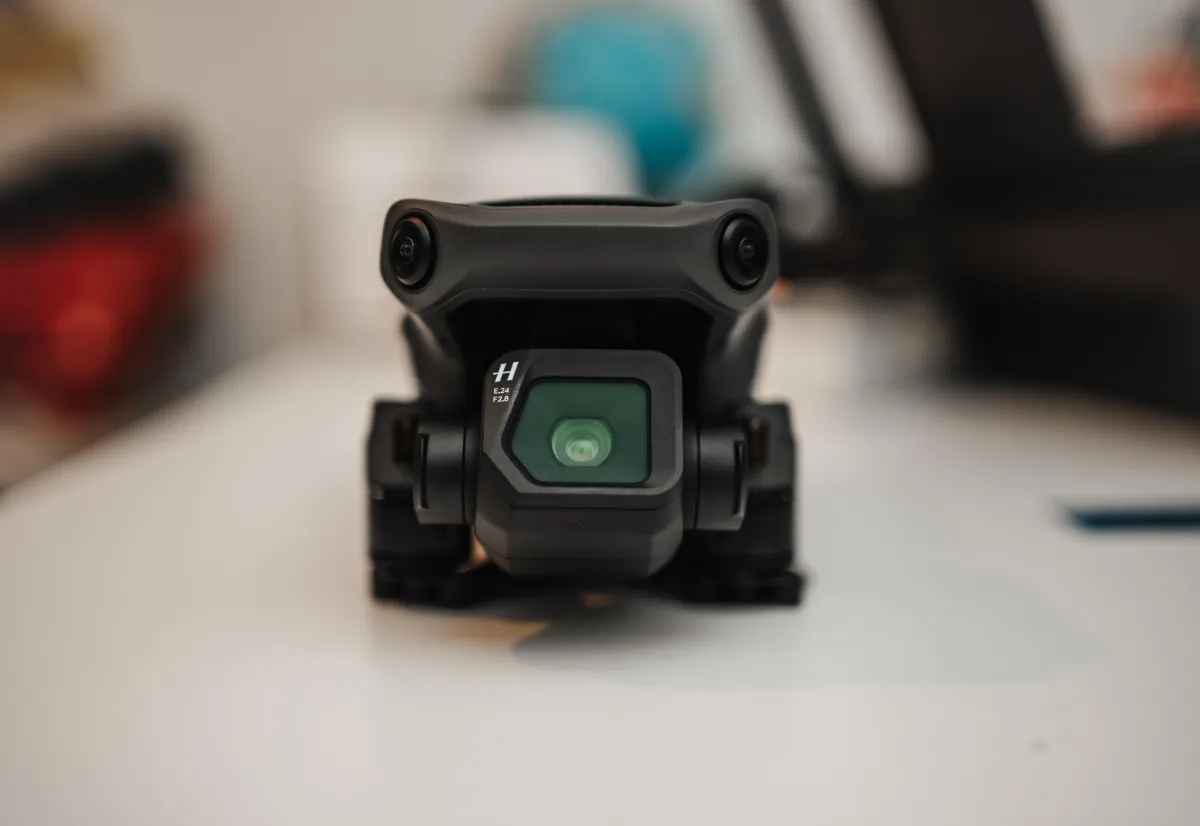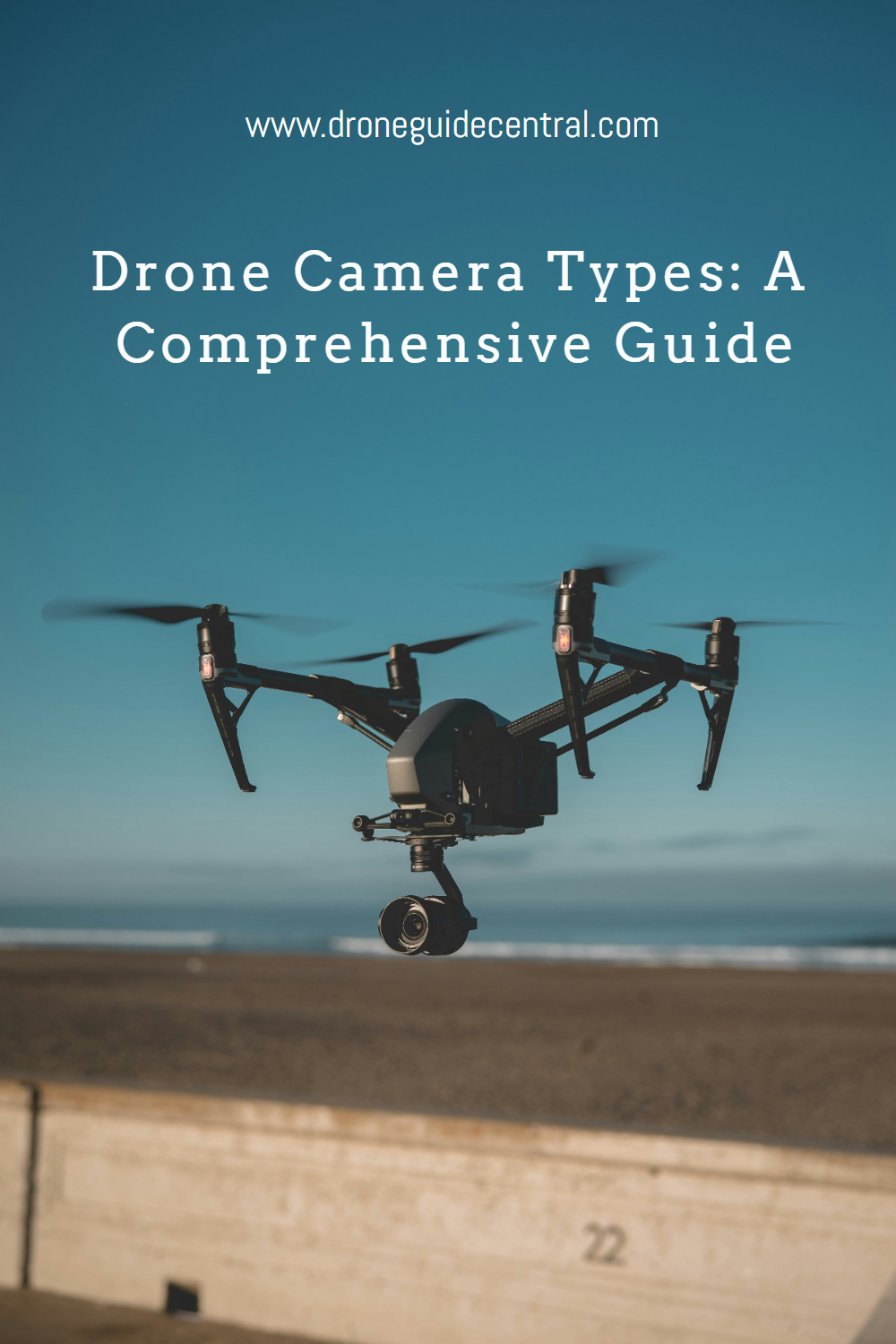
Drone Camera Types: A Comprehensive Guide
In the fast-evolving world of drones, the type of camera you choose can significantly impact your aerial photography and videography experience. Let's embark on a journey exploring the nuanced world of drone camera types, ensuring you discover the ideal lens to capture breathtaking moments from the skies.
Drone Camera Types: Navigating the Sky with Precision and Clarity
Choosing the right camera is as crucial as selecting the drone itself. In this expansive landscape of drone cameras, an assortment of options awaits, each meticulously designed to cater to distinct preferences and requirements.
Importance of Choosing the Right Camera
Beyond the mere considerations of megapixels and resolution, the decision on a drone camera involves contemplating factors such as sensor size, gimbal stabilization, and specialized features. These elements collectively play a pivotal role in shaping the suitability of the camera for your specific needs. Now, let's embark on a journey into the intricacies of each camera type, unveiling the myriad possibilities they offer.
Drone Camera Types
RGB Cameras in Photography and Videography
RGB cameras, employing the standard Red, Green, and Blue color spectrum, offer traditional color imaging. Widely used in everyday photography and videography, these cameras are versatile and user-friendly. They serve various purposes, from capturing vibrant landscapes to documenting events. The straightforward color representation makes RGB cameras accessible for a broad range of applications, both amateur and professional.
Specialized Drone Cameras for Professionals:
Beyond the standard offerings, commercial drones are equipped with specialized drone cameras that cater to professionals with unique needs. Thermal imaging cameras find applications in search and rescue missions, while Lidar cameras excel in precision mapping and surveying. Explore these advanced options to unlock new possibilities in your drone endeavors. Explore further in articles from ieee.org here and here.
Thermal Imaging Cameras for Search and Rescue
Thermal imaging cameras operate on infrared technology, detecting and visualizing heat signatures that are invisible to the naked eye. Widely utilized in search and rescue operations, these cameras excel in locating individuals or animals in challenging terrains, where conventional visibility may be limited. Additionally, they find applications in security and surveillance, where identifying temperature anomalies can indicate potential threats or abnormalities.
Monitoring Agricultural Land with NDVI Cameras
NDVI cameras, based on the Normalized Difference Vegetation Index, play a pivotal role in precision agriculture. By measuring the amount of light reflected by plants, these cameras provide valuable insights into crop health and vigor. Farmers and agronomists leverage NDVI data to assess the effectiveness of irrigation, detect nutrient deficiencies, and optimize overall crop management practices, resulting in increased yields and more sustainable agricultural practices.
Lidar Cameras in the Construction Industry and Mapping
Lidar cameras utilize laser pulses to create highly accurate 3D maps of landscapes and structures. In the construction industry, these cameras are indispensable for precise mapping and surveying, allowing architects, engineers, and construction professionals to plan and execute projects with unparalleled accuracy. Lidar technology is also employed in autonomous vehicles for mapping the surrounding environment, ensuring safe and efficient navigation.
Built-in Cameras: The All-in-One Convenience
Built-in cameras come integrated into the drone, offering a hassle-free setup. While they lack the flexibility of interchangeable cameras, they provide a streamlined experience for beginners. Popular models like the DJI Mavic Air 2 showcase the capabilities of built-in cameras, striking a balance between performance and ease of use.
Pros and Cons of Built-in Cameras
Pros:
Compact and lightweight design.
Seamless integration with the drone.
Ideal for beginners and casual flyers.
Cons:
Limited customization options.
Upgrades require replacing the entire drone.
Interchangeable Cameras: Tailoring Your Aerial Experience
For enthusiasts seeking greater control over their equipment, drones with interchangeable cameras are the go-to choice. This setup allows you to switch between different lenses, adapting to diverse shooting scenarios. Models like the Autel Robotics EVO 2 Series, DJI Inspire 2, and Inspire 3 offer flexibility and customization for advanced users.
Flexibility and Customization with Interchangeable Cameras
Flexibility:
Swap lenses for various shooting conditions.
Upgrade the camera without changing the entire drone.
Customization:
Choose cameras with specific features.
Optimize equipment for professional needs.
HD vs. 4K vs. Higher Resolutions: Finding the Sweet Spot
Resolution is a key factor in determining the clarity of your aerial footage. While HD (1080p) is suitable for casual users, 4K and higher resolutions provide unparalleled detail for professional applications. Consider your intended use and storage capacity when deciding on the optimal resolution for your drone camera.
Balancing Resolution and File Size
High Definition (HD):
Suitable for casual users.
Smaller file sizes for easier storage.
4K and Higher:
Ideal for professional videography.
Captures intricate details for cinematic quality.
Benefits of Higher Resolutions
Sharper Details:
Crystal-clear visuals with enhanced details.
Ideal for professional cinematography.
Editing Flexibility:
Zoom in without sacrificing quality.
Post-production enhancements for a polished finish.
Sensor Size Matters: Impact on Image Quality
Beyond resolution, the size of the camera sensor significantly influences image quality. Larger sensors excel in low light conditions and offer a better dynamic range, resulting in more vibrant and detailed photos and videos. Understanding the importance of sensor size empowers you to make informed choices based on your shooting environment.
Low Light Performance with Larger Sensors
In low-light conditions, the size of the camera sensor becomes pivotal for optimal image quality. Larger sensors excel in capturing more light, reducing image noise, and delivering clearer shots when ambient lighting is limited. Choosing a drone with superior low light performance, especially in scenarios like sunset or night photography, enhances the overall quality of aerial imagery, making it suitable for a wide range of creative applications.
Dynamic Range Considerations
Dynamic range, a critical aspect of drone photography, refers to the camera's ability to capture details in both bright and dark areas of an image. Opting for a camera with excellent dynamic range ensures vibrant and well-balanced photos, especially in challenging lighting conditions where stark contrasts between light and shadow are prevalent. This feature proves invaluable in landscapes, architecture, and scenarios with varying levels of illumination.
Focal Length and Precision in Photography
Focal length plays a crucial role in drone photography, determining the field of view and magnification of the captured images. A longer focal length, such as in telephoto lenses, is ideal for capturing distant subjects with precision, while shorter focal lengths, like wide-angle lenses, excel in expansive landscapes, providing a broader perspective. Understanding the impact of focal length on composition allows drone enthusiasts to adapt their equipment to specific shooting scenarios and achieve optimal results in diverse aerial photography situations.
DJI Mavic 3, DJI Mavic 3 Pro, and DJI Air 3 stand out as drones that excel in low-light conditions, offer impressive dynamic range, and provide versatile focal length options. These models are equipped with advanced features and technologies that enhance their performance, making them ideal choices for capturing high-quality images and videos in challenging lighting situations. Whether navigating dimly lit environments, achieving optimal dynamic range in diverse settings, or adjusting focal length for precision in composition, these drones showcase a commitment to delivering exceptional imaging capabilities.
Gimbal Stabilization: The Steady Shot Advantage
Gimbal stabilization is a game-changer for achieving smooth and steady footage. Whether you're capturing fast-paced action or hovering in place, a reliable gimbal ensures your videos are free from shakes and jitters. Explore the advantages of three-axis and two-axis gimbals to find the stabilization solution that suits your needs.
Significance of Gimbal Stabilization
Three-Axis vs. Two-Axis Gimbals
Three-Axis:
Comprehensive stabilization in all directions.
Ideal for dynamic shots and fast movements.
Two-Axis:
Basic stabilization for smoother footage.
Suitable for casual flying and basic photography.
Thanks to the swift advancements in drone technology, achieving stable drone footage is now easily attainable with mini drone models equipped with 3-axis gimbals. Models like the DJI Mini 2 SE, DJI Mini 3 Pro, Mini 4 Pro, and Autel Evo Nano + not only provide steady shots but also come with a variety of flight modes catering to the needs of both beginners and seasoned professionals. Explore further details about each drone by clicking here.
Best Practices for Drone Camera Maintenance
Ensuring the longevity and optimal performance of your drone camera involves regular maintenance. Learn the dos and don'ts of cleaning and protecting your lenses, preserving image quality, and extending the lifespan of your equipment.
Importance of Regular Maintenance
Cleaning and Protecting Lenses:
Remove dust and smudges for clear visuals.
Use lens-safe cleaning products to avoid damage.
Cleaning Products to Avoid
Avoid:
Harsh chemicals that can damage lens coatings.
Materials with abrasiveness that could potentially scratch the surface of the lens.
Drone Camera Types: Future Trends
The world of drone cameras is evolving rapidly, with future trends incorporating artificial intelligence (AI) for enhanced capabilities. Smart object tracking and autonomous image enhancement are on the horizon, promising exciting developments for drone enthusiasts.
AI Integration for Smart Object Tracking
Smart Object Tracking:
Automatically follows subjects for dynamic shots.
Ideal for capturing moving targets and action sequences.
Autonomous Image Enhancement
Advanced Image Processing:
AI-driven enhancements for optimal image quality.
Streamlined post-processing for professional results.
Choosing the Right Drone Camera for You
With an abundance of options, choosing the right drone camera can be overwhelming. Tailor your selection based on your specific needs, whether you're a hobbyist or a professional. Consider budget constraints, desired features, and intended applications to find the perfect match for your aerial adventures.
Hobbyist vs. Professional Considerations
Hobbyist:
Emphasis on ease of use and affordability.
Built-in cameras or lower-resolution options may suffice.
Professional:
Prioritize advanced features and customization.
Invest in interchangeable cameras with higher resolutions.
Budget Constraints and Alternatives
Budget-Friendly Options:
Explore entry-level models with basic features.
Consider second-hand drones for cost savings.
Real-world Examples and User Experiences
Learning from the experiences of fellow drone enthusiasts provides valuable insights. Engage with online communities, forums, and discussion platforms to discover real-world examples and user reviews. Leverage this collective wisdom to make informed decisions when selecting your drone camera.
Forums and Discussion Platforms
Engaging with the Community:
Participate in discussions to learn from others.
Exchange your experiences and seek guidance from experienced users.
Learning from Others' Experiences
User Reviews:
Consider user feedback on specific drone models.
Identify common issues and positive experiences for a balanced perspective.
Drone Camera Types: Conclusion
In the ever-expanding realm of drone cameras, the choice you make is more than a technical decision – it's a personal one that shapes your aerial storytelling journey. By understanding the nuances of built-in and interchangeable cameras, resolutions, sensor sizes, gimbal stabilization, and specialized options, you're equipped to make an informed choice.
FAQs
1. How often should I clean my drone camera lenses?
Regular cleaning is essential to maintain image quality. Clean your lenses before each flight, especially if you notice dust or smudges.
2. Are thermal imaging cameras only for professionals?
While thermal imaging cameras are commonly used in professional settings, they can also benefit hobbyists interested in unique photography challenges, such as capturing heat signatures in diverse environments.
3. Can I upgrade the camera on my existing drone?
Drones equipped with interchangeable cameras offer the option for camera upgrades. However, built-in cameras may limit your upgrade options, requiring a new drone purchase for significant improvements.
4. What should I prioritize – resolution or sensor size?
The ideal balance depends on your intended use. For detailed shots in various conditions, prioritize sensor size. If storage space is a concern, consider a balance between resolution and file size.
5. How do AI-driven enhancements work in drone cameras?
AI-driven enhancements use machine learning algorithms to analyze and improve images. This can include automatic adjustments to color, contrast, and sharpness for optimal results.

Copyright © Drone Guide Central - All Rights Reserved 2024

